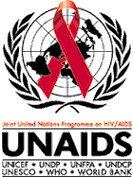

Trichomoniasis
What is trichomoniasis?
Trichomoniasis is a common sexually transmitted disease (STD) that affects both women and men, although symptoms are more common in women.
What causes trichomoniasis?
Trichomoniasis is caused by the single-celled protozoan parasite Trichomonas vaginalis. The vagina is the most common site of infection in women, and the urethra is the most common site of infection in men.
How do people get trichomoniasis?
Trichomoniasis is a sexually transmitted disease that is spread through penis-to-vagina intercourse or vulva-to-vulva contact with an infected partner. Women can acquire the disease from infected men or women, whereas men usually contract it only from infected women.
How common is trichomoniasis?
Trichomoniasis is the most common curable STD in young, sexually active women. An estimated 5 million new cases occur each year in women and men.
What are the signs and symptoms of trichomoniasis?
Most men with trichomoniasis do not have signs or symptoms. Men with symptoms may have an irritation inside the penis, mild discharge, or slight burning after urination or ejaculation.
Many women do have signs or symptoms of infection. In these women, trichomoniasis causes a frothy, yellow-green vaginal discharge with a strong odor. The infection may also cause discomfort during intercourse and urination. Irritation and itching of the female genital area and, in rare cases, lower abdominal pain can also occur.
When do symptoms appear?
Symptoms usually appear within 5 to 28 days of exposure in women.
What are the complications of trichomoniasis?
Trichomoniasis in pregnant women may cause premature rupture of the membranes and preterm delivery. The genital inflammation caused by trichomoniasis might also increase a woman's risk of acquiring HIV infection if she is exposed to HIV. Trichomoniasis in a woman who is also infected with HIV can increase the chances of transmitting HIV infection to a sex partner.
How is trichomoniasis diagnosed?
To diagnose trichomoniasis, a health care provider must perform a physical examination and laboratory test. In women, a pelvic examination can reveal small red ulcerations on the vaginal wall or cervix. Laboratory tests are performed on a sample of vaginal fluid or urethral fluid to look for the disease-causing parasite. The parasite is harder to detect in men than in women.
Who is at risk for trichomoniasis?
Any sexually active person can be infected with trichomoniasis.
What is the treatment for trichomoniasis?
Trichomoniasis can usually be cured with the prescription drug metronidazole given by mouth in a single dose. The symptoms of trichomoniasis in infected men may disappear within a few weeks without treatment. However, an infected man, even a man who has never had symptoms or whose symptoms have stopped, can continue to infect a female partner until he has been treated. Therefore, both partners should be treated at the same time to eliminate the parasite. Persons being treated for trichomoniasis should avoid sex until they and their sex partners complete treatment and have no symptoms. Metronidazole can be used by pregnant women.
How can trichomoniasis be prevented?
Use condoms correctly
every time you have sex.
The use of latex or polyurethane condoms during vaginal intercourse can
prevent the transmission of trichomoniasis. However, condoms do not provide
complete protection from all STDs. Sores and lesions of other STDs on
infected men and women may be present in areas not covered by the condom,
resulting in transmission of infection to another person.
Limit the number of sex partners, and do not go back and forth between partners.
Practice sexual abstinence, or limit sexual contact to one uninfected partner.
If you think you
are infected, avoid sexual contact and see a health care provider.
Any genital symptoms such as discharge or burning during urination or
an unusual sore or rash should be a signal to stop having sex and to consult
a health care provider immediately. If you are told you have trichomoniasis
or any other STD and receive treatment, you should notify all of your
recent sex partners so that they can see a health care provider and be
treated.
For more information
DSTD Web address http://www.cdc.gov/std//
National HPV and Cervical Cancer
CDC NPIN
P.O. Box 6003 Rockville, MD 20849-6003
1-800-458-5231 1-888-282-7681
Fax 1-800-243-7012 TTY
www.cdcnpin.org/
info@cdcnpin.orgAmerican Social Health Association
References
Krieger JN and Alderete JF. Trichomonas vaginalis and trichomoniasis. In: K. Holmes, P. Markh, P. Sparling et al (eds). Sexually Transmitted Diseases, 3rd Edition. New York: McGraw-Hill, 1999, 587-604.

